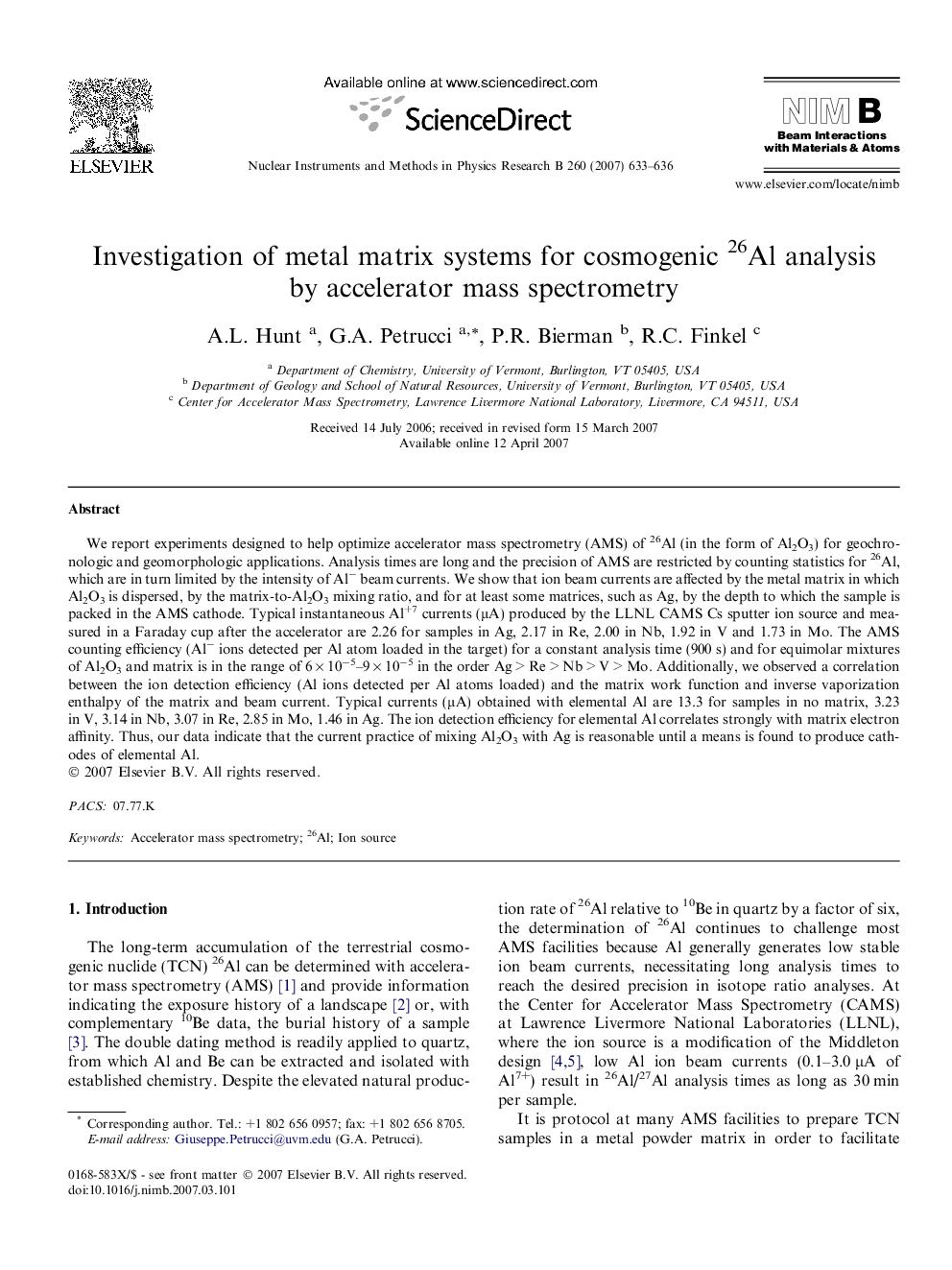| Article ID | Journal | Published Year | Pages | File Type |
|---|---|---|---|---|
| 1684667 | Nuclear Instruments and Methods in Physics Research Section B: Beam Interactions with Materials and Atoms | 2007 | 4 Pages |
We report experiments designed to help optimize accelerator mass spectrometry (AMS) of 26Al (in the form of Al2O3) for geochronologic and geomorphologic applications. Analysis times are long and the precision of AMS are restricted by counting statistics for 26Al, which are in turn limited by the intensity of Al− beam currents. We show that ion beam currents are affected by the metal matrix in which Al2O3 is dispersed, by the matrix-to-Al2O3 mixing ratio, and for at least some matrices, such as Ag, by the depth to which the sample is packed in the AMS cathode. Typical instantaneous Al+7 currents (μA) produced by the LLNL CAMS Cs sputter ion source and measured in a Faraday cup after the accelerator are 2.26 for samples in Ag, 2.17 in Re, 2.00 in Nb, 1.92 in V and 1.73 in Mo. The AMS counting efficiency (Al− ions detected per Al atom loaded in the target) for a constant analysis time (900 s) and for equimolar mixtures of Al2O3 and matrix is in the range of 6 × 10−5–9 × 10−5 in the order Ag > Re > Nb > V > Mo. Additionally, we observed a correlation between the ion detection efficiency (Al ions detected per Al atoms loaded) and the matrix work function and inverse vaporization enthalpy of the matrix and beam current. Typical currents (μA) obtained with elemental Al are 13.3 for samples in no matrix, 3.23 in V, 3.14 in Nb, 3.07 in Re, 2.85 in Mo, 1.46 in Ag. The ion detection efficiency for elemental Al correlates strongly with matrix electron affinity. Thus, our data indicate that the current practice of mixing Al2O3 with Ag is reasonable until a means is found to produce cathodes of elemental Al.
